Broadway By Design: Beatty, Zuber, Stanton, Bennett & 59 Productions Bring JUNK from Page to Stage
Who is Annie without her red dress? Or Eva with out her balcony? It is the charge of the Broadway designer to transport the audience into the world of a show, whether it be Great Depression-era New York City or outside of the Casa Rosada.
In Broadway by Design, BroadwayWorld is shining a spotlight on the stellar designs of this Broadway season, show by show. Today, we continue the series with a design dream team- John Lee Beatty (scenic), Catherine Zuber (costumes), Ben Stanton (lighting), Mark Bennett (sound), and 59 Productions (projections), who put together Lincoln Center's provocative new play, Junk.
It's 1985. Robert Merkin, the resident genius of the upstart investment firm Sacker Lowell, has just landed on the cover of Time Magazine. Hailed as "America's Alchemist," his proclamation that "debt is an asset" has propelled him to dizzying heights. Zealously promoting his belief in the near-sacred infallibility of markets, he is trying to re-shape the world.
JUNK is the story of Merkin's assault on American capitalism's holy of holies, the "deal of the decade," his attempt to takeover an iconic American manufacturing company and, in the process, to change all the rules. What Merkin sets in motion is nothing less than a financial civil war, pitting magnates against workers, lawyers against journalists, and ultimately, pitting every one against themselves.
So how was this world created on the Vivian Beaumont stage? Scenic designer John Lee Beatty found inspiration in two places. "One was a mirror glass building from the eighties on the #405 freeway in California . It always shocked me by its compartmentalized reflectiveness, making a simple yet confusing world of mirrors," he explains. "And the second inspiration was seeing an early reading of the play with the large cast constantly surging forward and back to make the meetings and phone calls that the fast changing structure of the play required. I kept that constantly in my thoughts."
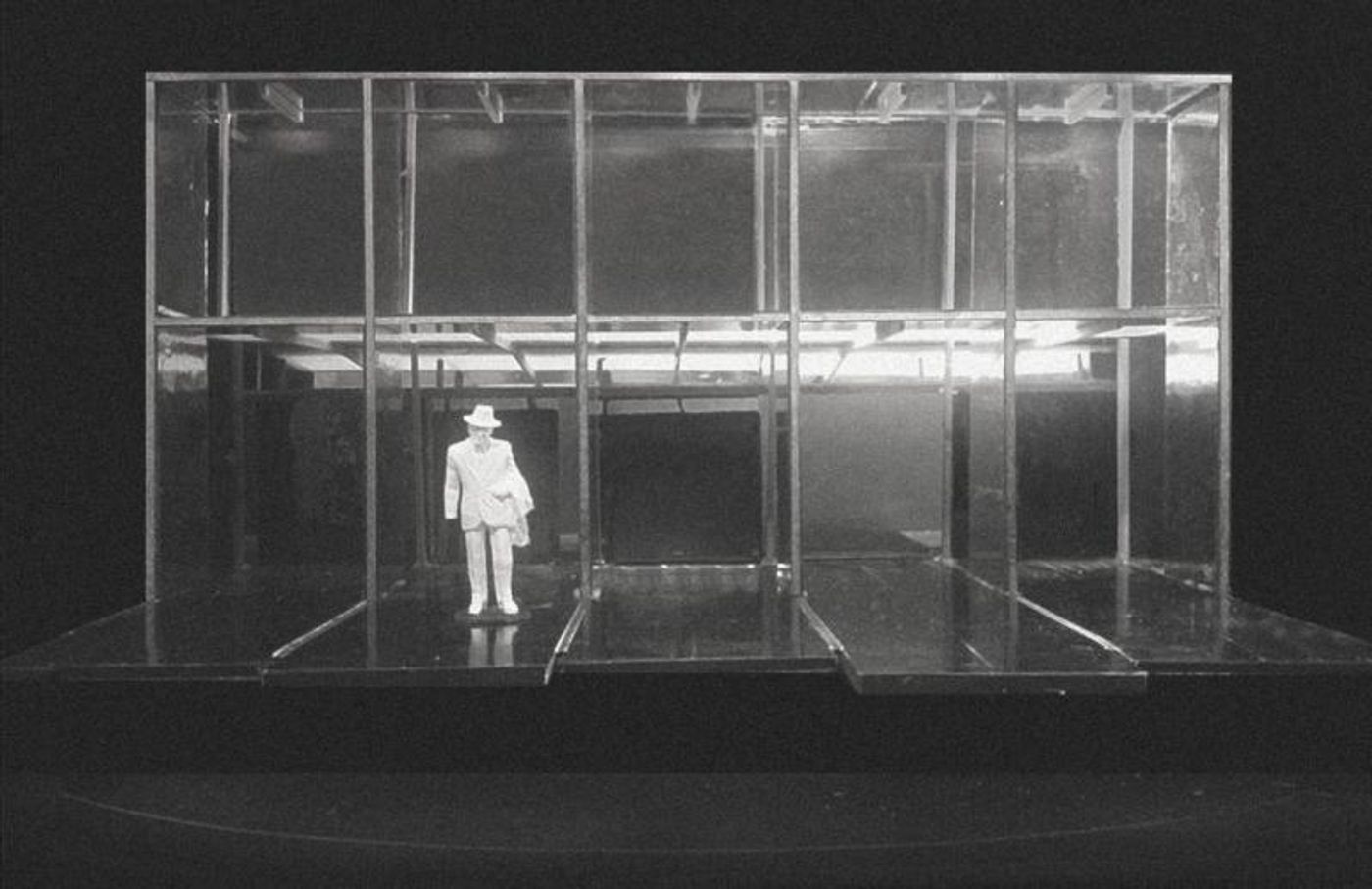
"The biggest challenge of the piece was to just keep it moving and changing constantly without making it seem effortful. I kept thinking of the Shakespeare plays I have done and how a few important props are all you need to propel a story forward," says Beatty.

Costume designer Catherine Zuber found her inspiration in fashion magazines of the 1980's, like GQ and Men's Vogue Italia. "The sartorial details in the photographs of financial celebrities as they navigated their rarified environment were invaluable," says Zuber.

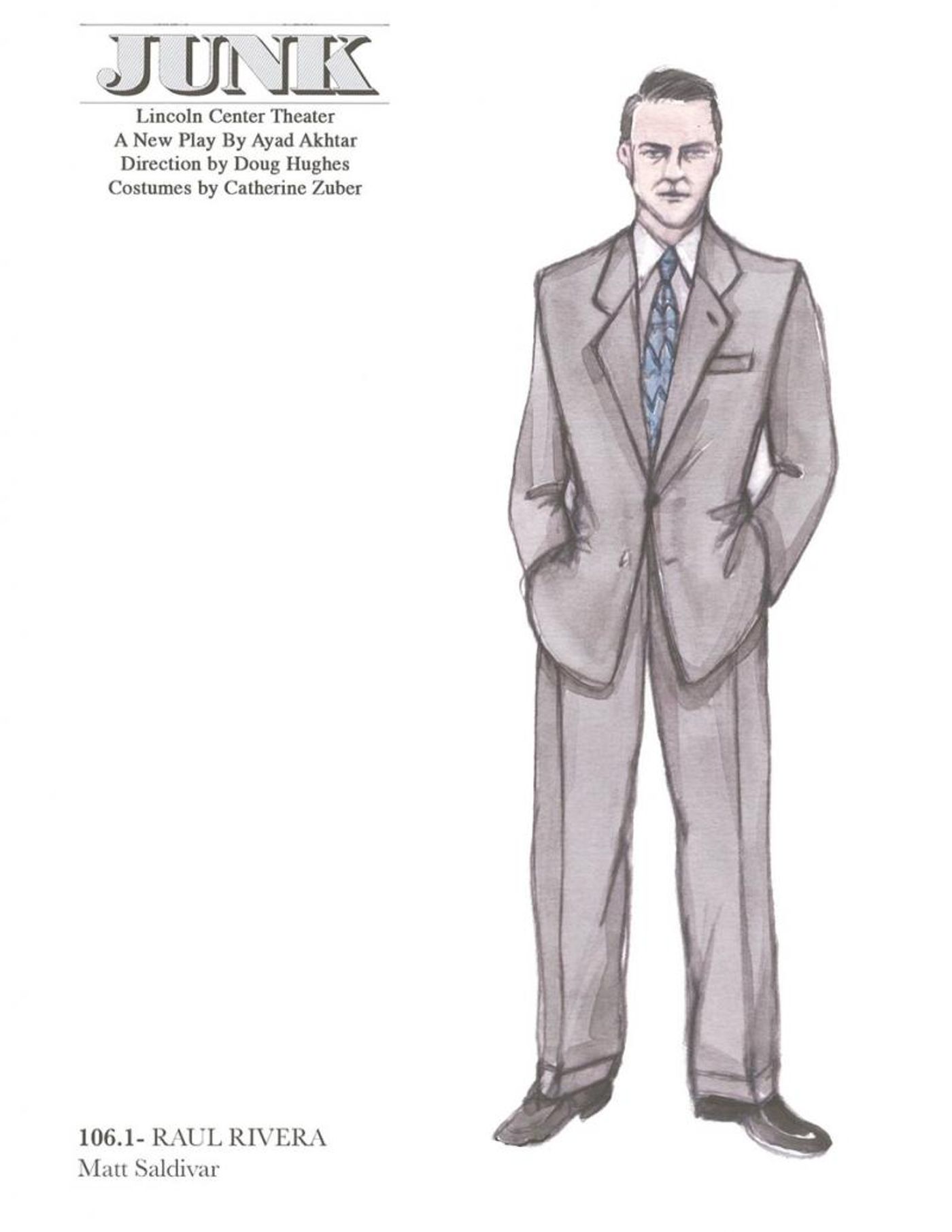

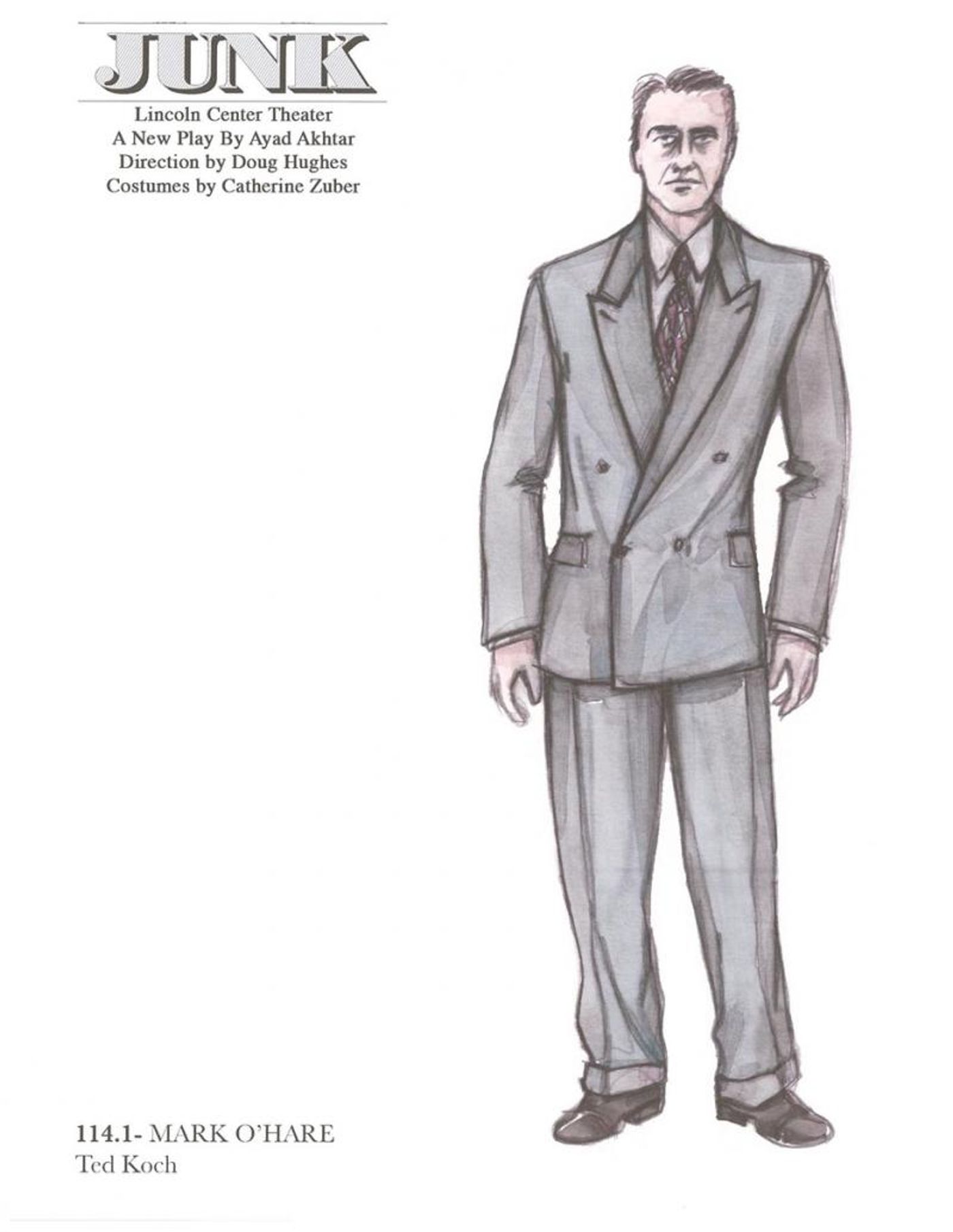
"My biggest challenge was to suggest the time period of the 1980's without being distracting to the story-telling. Also -- in a world of men in suits, it was important that each character had their own distinctive style."
How did Ben Stanton use lighting to depict the the financial world of the 1980s? "I re-watched some films like Wall Street and American Psycho to remind me of the technology of the era, and what a trading floor looked like back then," says Stanton.

"The main inspiration for the lighting design were discussions had with writer Ayad Akhtar, director Doug Hughes, and the other designers about power, money, status, and greed. As part of our preparation, we discussed the raw ambition of the new guard versus the apathy and ineffectiveness of the old; how everyone in the play pretends to have morals, but no one really does; how the antics of 1980's finance changed all the rules and the ways in which it's still affecting us today."
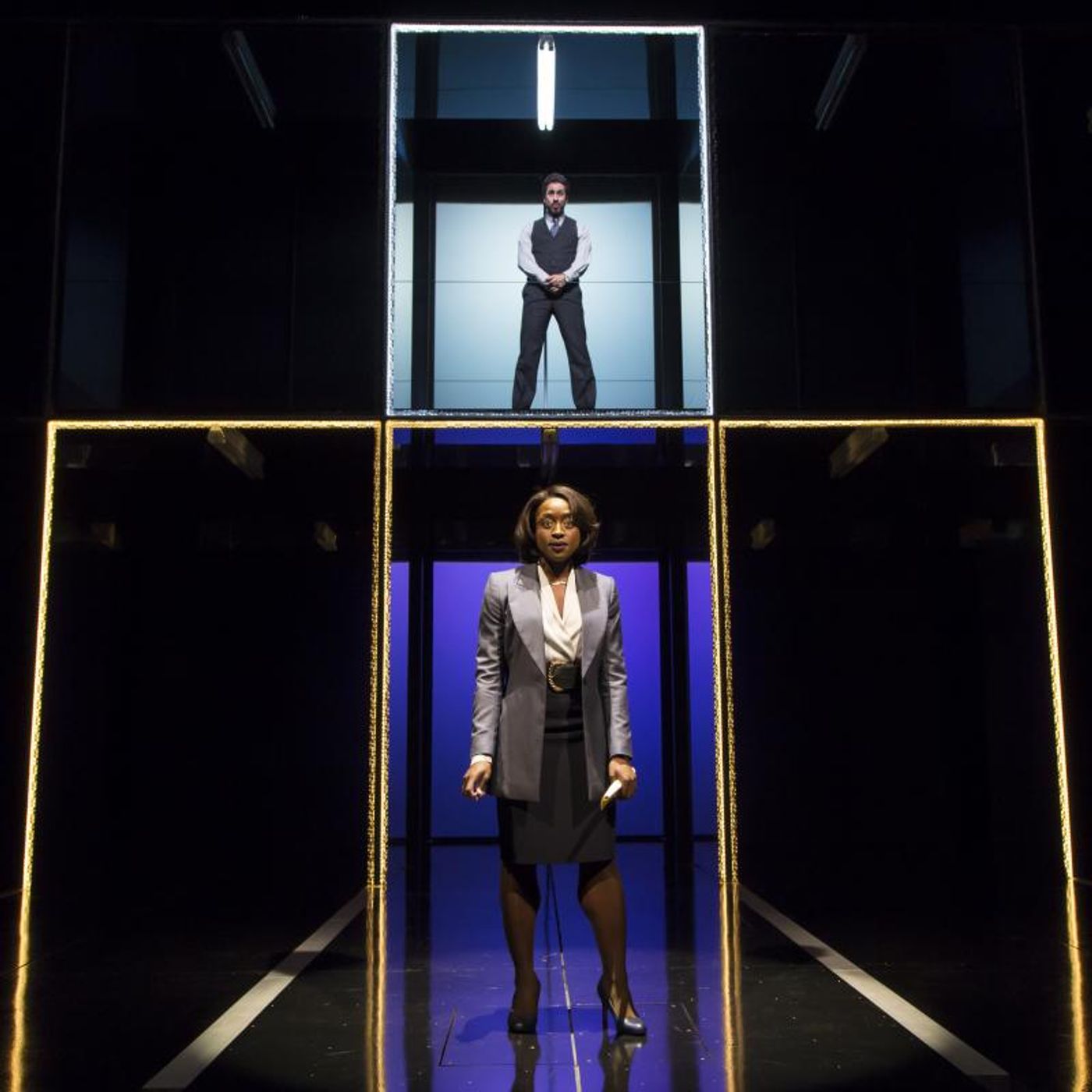
"The world we created for this play is an abstract theatrical space that articulates all of these psychological and socio-economic realities. The play moves from coast to coast and from the bedroom to the boardroom, and in every scene, we use design to apply pressure to the characters, reminding the audience of the stakes and ambition of all involved. All of the transitions are as crisp and quick as the characters themselves, and actors and set pieces move through the space as smoothly as a Wall Street ticker. There's a language of ruthless efficiency that weaves its way through all of the elements of the production in a way that hopefully leaves the audience feeling both thrilled and a little on edge."
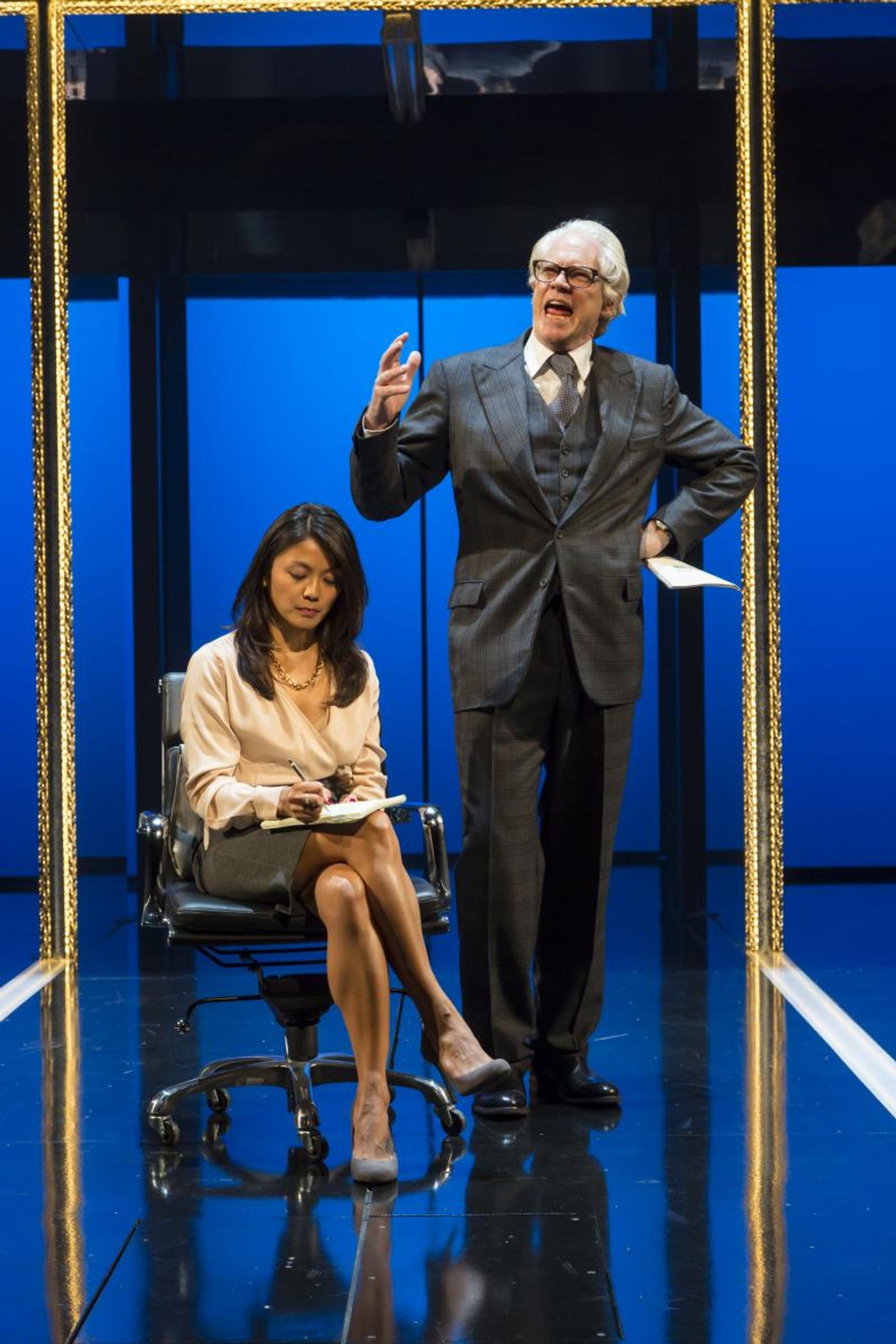
"We were determined to keep our storytelling abstract to give the sense that while our story took place in the 1980's, it could also be viewed as a timeless fable, or one of Shakespeare's history plays. It's also important to remember that the ideas in the play are still very relevant today," explains Stanton.
That vision extended to the production's projections, created by 59 Productions. Like Stanton, the design began with director Doug Hughes. "Doug had noticed a piece of mail he received from an investment company that was a sea of spreadsheets - the numbers all completely incomprehensible to him. But he realized that the characters in the play would all have seen the hidden meaning in those numbers."
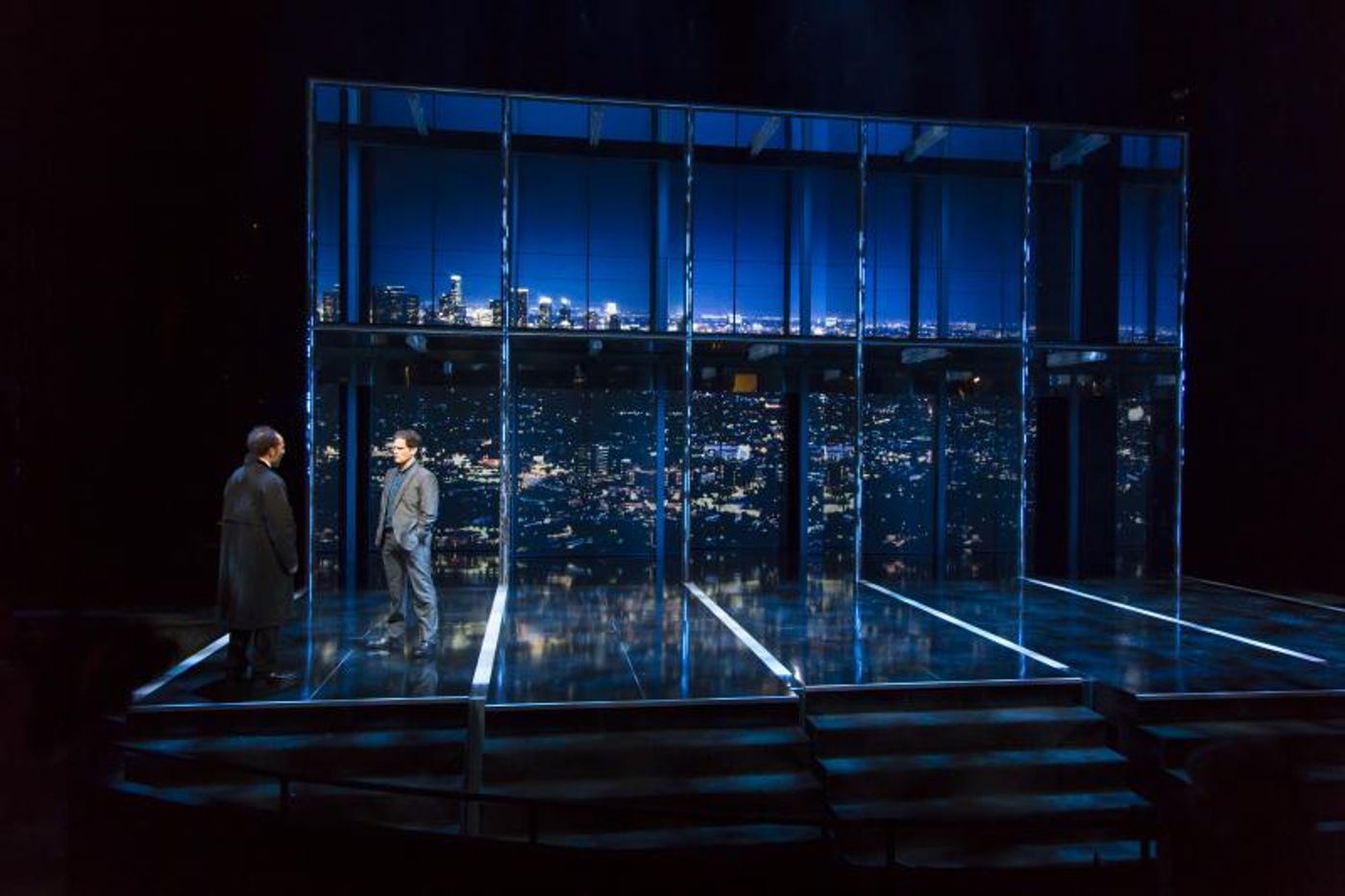
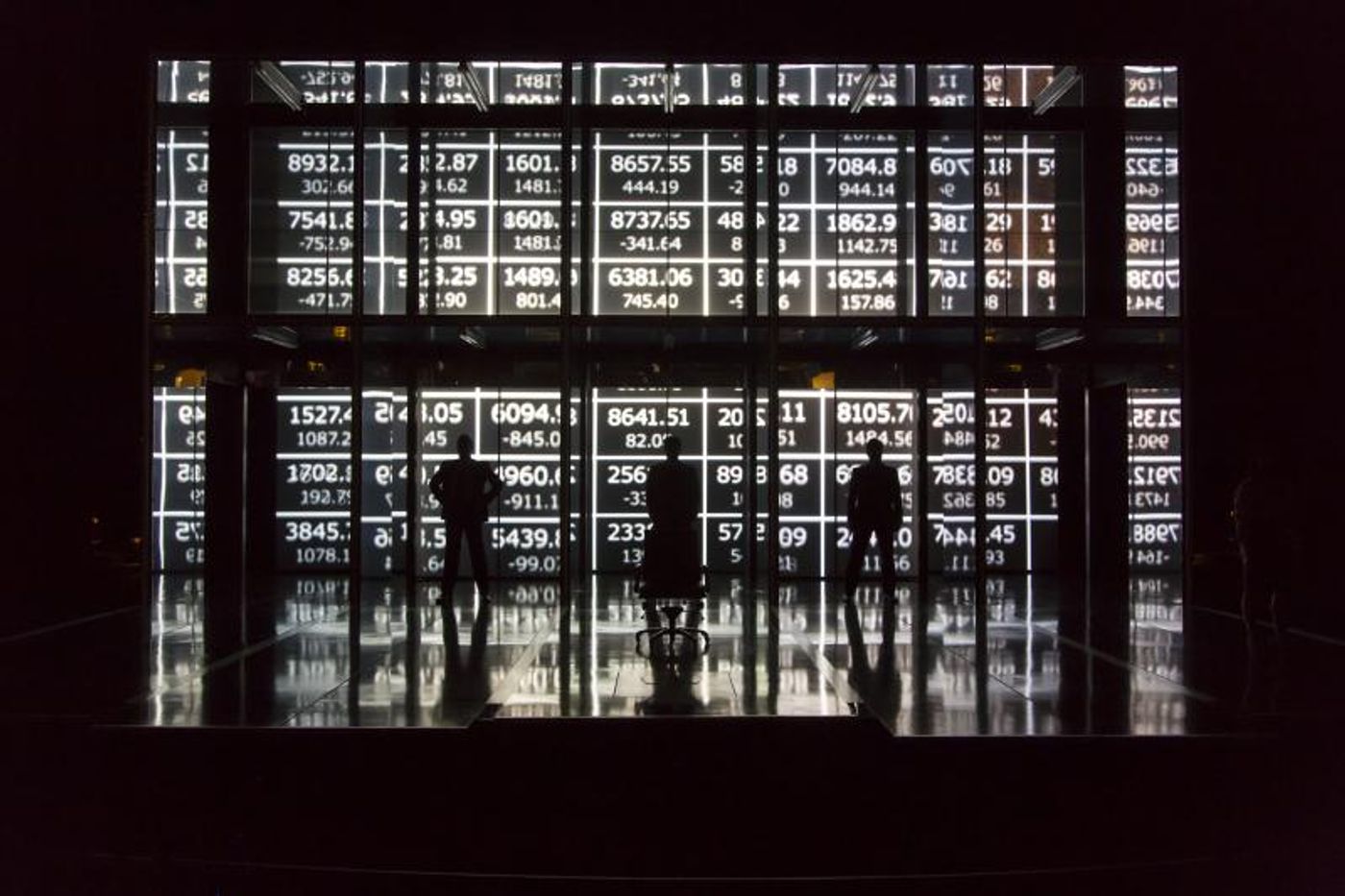
"With the help of Mark Bennett's inspiring score we were able to create animations that are designed to show those hidden meanings in the numbers that make up the financial world that so viscerally inhabits the world of the characters in the play."
And early conversation with Hughes inspired Bennett to create a score with the same breathless drive as a Shakespearean war play. "The idea of drive, of racing towards possession, acquisition, money, power....that idea gave birth to the variety of pulses that get us from scene to scene," says Bennett. "Almost every transition is pulse-driven. If it's electronic/synthesized it's mostly related to the younger generation's assault on the Dow Jones, If it's more traditional instrumentation it's leading us to scenes of the older, Wall Street "blue-blood" generation's attempt to repel that attack. If it's percussion and horns it's tagging the District Attorney's pursuit of insider trading (the closest thing to a literal Shakespearean "alarum" in the score)."
"The phone calls from trader to trader are actually all mini-pulses of internal and external phone rings. There's only one moment in the score, the longest musical moment, that doesn't have a discernible pulse at all; the music suspends the audience and it helps discern a particular "tipping point" in the drama."
Want more Broadway By Design? CLICK HERE.
Lincoln Center Theater presents Junk, a new play by Ayad Akhtar, Directed by Doug Hughes, currently playing at the Vivian Beaumont Theater (150 West 65 Street).
Junk stars Ito Aghayere, Phillip James Brannon, Tony Carlin, Demosthenes Chrysan, Jenelle Chu, Caroline Hewitt, Rick Holmes, Ted Koch, Ian Lassiter, Teresa Avia Lim, Adam Ludwig, Sean McIntyre, Nate Miller, Steven Pasquale, Ethan Phillips, Matthew Rauch, Matthew Saldivar, Charlie Semine, Michael Siberry, Miriam Silverman, Joey Slotnick, Henry Stram and Stephanie Umoh.
Photo Credit: T. Charles Erickson
Powered by
|
Videos


